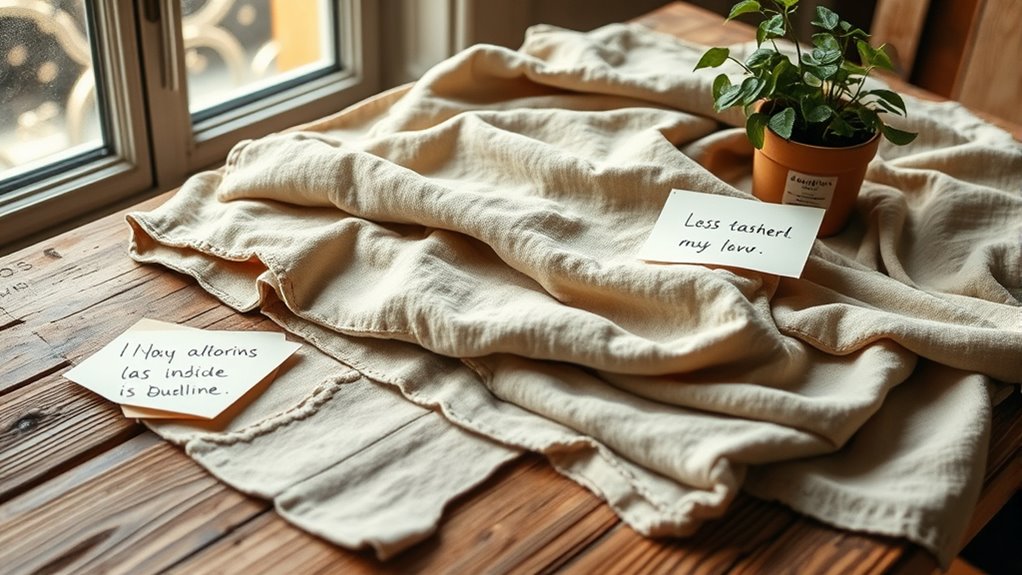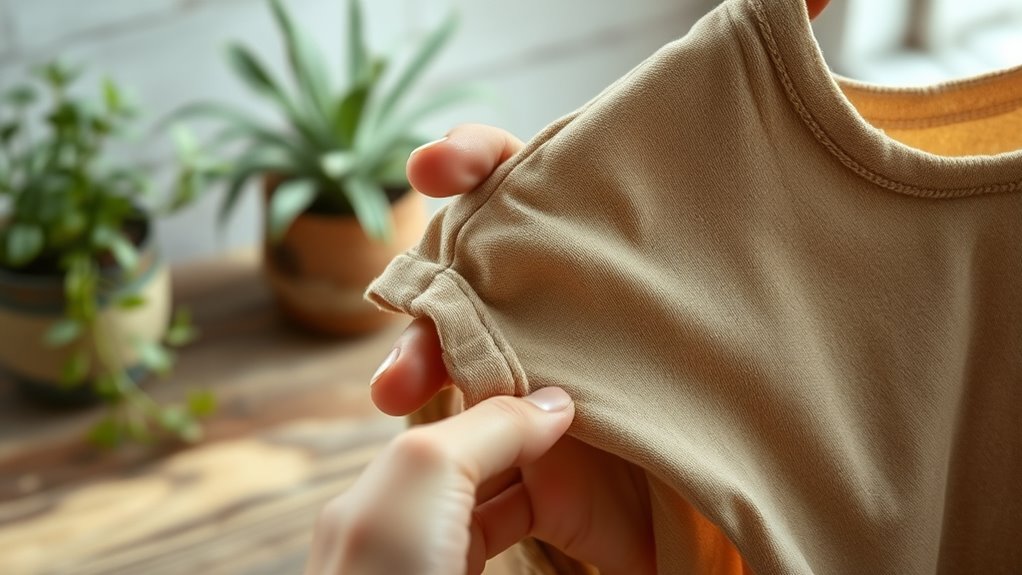Choosing to buy less and focus on quality makes a powerful statement against fast fashion’s harmful cycle. It reduces waste, decreases environmental pollution, and supports ethical labor practices. By investing in durable, timeless pieces, you promote mindful consumption and help shift industry standards toward sustainability. This intentional approach encourages a wardrobe of meaning and longevity. Keep exploring how your choices can drive positive change and reshape the way we shop and dress.
Key Takeaways
- Buying less reduces waste and environmental pollution caused by fast fashion’s disposable clothing.
- It promotes the purchase of higher-quality, durable garments that last longer, reducing the need for frequent replacements.
- Choosing fewer, intentional pieces supports ethical labor practices and fair wages in manufacturing.
- Less consumption encourages mindful decision-making aligned with personal values and sustainability goals.
- Supporting slow fashion pushes the industry toward greener practices and a more ethical, sustainable future.

Have you ever wondered if your clothing choices could make a real difference? The truth is, they can. In a world overwhelmed by fast fashion’s constant cycle of cheap, disposable clothing, embracing slow fashion offers a powerful alternative. By choosing to buy less and focus on quality, you’re not only reducing waste but also supporting a more sustainable future. Central to this movement are sustainable materials and ethical manufacturing. When you opt for clothing made from sustainable fabrics—like organic cotton, hemp, or recycled fibers—you’re making a conscious decision to lessen environmental harm. These materials are grown and processed with minimal chemicals, water, and waste, which means less pollution and a healthier planet. Ethical manufacturing, on the other hand, ensures that the people involved in making your clothes are treated fairly and work in safe conditions. When you prioritize brands committed to fair wages and humane working environments, you’re helping to combat exploitation and promote social justice. Additionally, understanding the state tax implications of your clothing purchases can influence your overall budget and sustainability goals.
Switching to slow fashion isn’t just about buying fewer items; it’s about shifting your mindset towards intentional consumption. Instead of chasing after fleeting trends and fast fashion sales, you focus on investing in pieces that will last. These garments are often crafted with better craftsmanship, using durable fabrics and thoughtful construction techniques. As a result, your wardrobe becomes more cohesive, and each piece holds more value. This approach encourages you to think about the lifecycle of your clothing—how long it will last, whether it can be repaired, and if it aligns with your values. When you buy less but choose wisely, you’re reducing landfill waste and the demand for fast production, which often leads to environmental degradation and unethical labor practices.
Supporting slow fashion brands that prioritize sustainable materials and ethical manufacturing also creates a ripple effect. It pushes the industry toward greener practices and fairer labor standards. Your conscious purchasing decisions send a message that consumers care about the origins of their clothes, fostering accountability and change within the industry. Ultimately, buying less and choosing thoughtfully isn’t just good for the environment or for workers—it’s a statement of your values. It reflects a commitment to living more intentionally, reducing waste, and making a positive impact through your wardrobe. By understanding the power behind your choices, you can help reshape the fashion landscape into one that values sustainability, ethics, and quality over quantity.
Frequently Asked Questions
How Can I Start Transitioning to Slow Fashion Easily?
To start moving to slow fashion easily, begin with wardrobe editing—sort through your clothes and keep only what you love and wear regularly. Focus on investing in pieces made from sustainable fabrics like organic cotton or hemp. Opt for quality over quantity, and gradually replace fast fashion items with timeless, durable pieces. This approach makes your wardrobe more eco-friendly while reducing clutter and supporting sustainable practices.
What Are the Best Brands Practicing Slow Fashion Principles?
Start shopping with brands like Patagonia, Everlane, and Reformation, which prioritize sustainable fabrics and ethical manufacturing. These brands build beautiful, durable pieces while balancing ethics and eco-friendliness. By choosing consciously created clothing, you support sustainability, safeguard workers’ rights, and slow down fast fashion’s frantic pace. Your style statement becomes stronger, smarter, and more sustainable, making a real, responsible difference in the world.
How Does Slow Fashion Impact Local Communities?
You impact local communities positively through slow fashion by supporting brands that prioritize sustainable sourcing and community empowerment. When you choose slow fashion, you’re helping artisans and local producers thrive, ensuring fair wages and better working conditions. Your conscious buying habits foster local economic growth, preserve traditional crafts, and promote environmentally friendly practices. This creates a ripple effect that strengthens communities while reducing environmental harm, making your fashion choices powerful and meaningful.
Can Slow Fashion Be Affordable for Everyone?
Like a gentle ripple across a pond, slow fashion can be affordable for everyone. You can find budget-friendly choices and affordable options by prioritizing quality over quantity and shopping smarter. Thrift stores, local markets, and online platforms often offer stylish, durable pieces at lower prices. While it might require some research and patience, slow fashion’s focus on longevity and sustainability makes it accessible, allowing you to make meaningful, eco-friendly choices without breaking the bank.
What Are Common Misconceptions About Slow Fashion?
You might think slow fashion is expensive or less stylish, but that’s a misconception. It’s centered on sustainable craftsmanship and ethical sourcing, ensuring each piece is made responsibly and lasts longer. You can find affordable options that prioritize quality over quantity, helping you make mindful choices. Embracing slow fashion means valuing durability and ethics, not just price, so you’re supporting a more sustainable and fair clothing industry.
Conclusion
By choosing to buy less, you’re not just saving money or reducing waste—you’re planting a seed for change. Each thoughtful purchase is a ripple in the pond of sustainability, growing into waves that reshape the fashion industry. Remember, your choices have the power to turn the tide toward a more mindful world. So, embrace slow fashion, and let your wardrobe be a canvas of purpose, proving that less truly is more.









